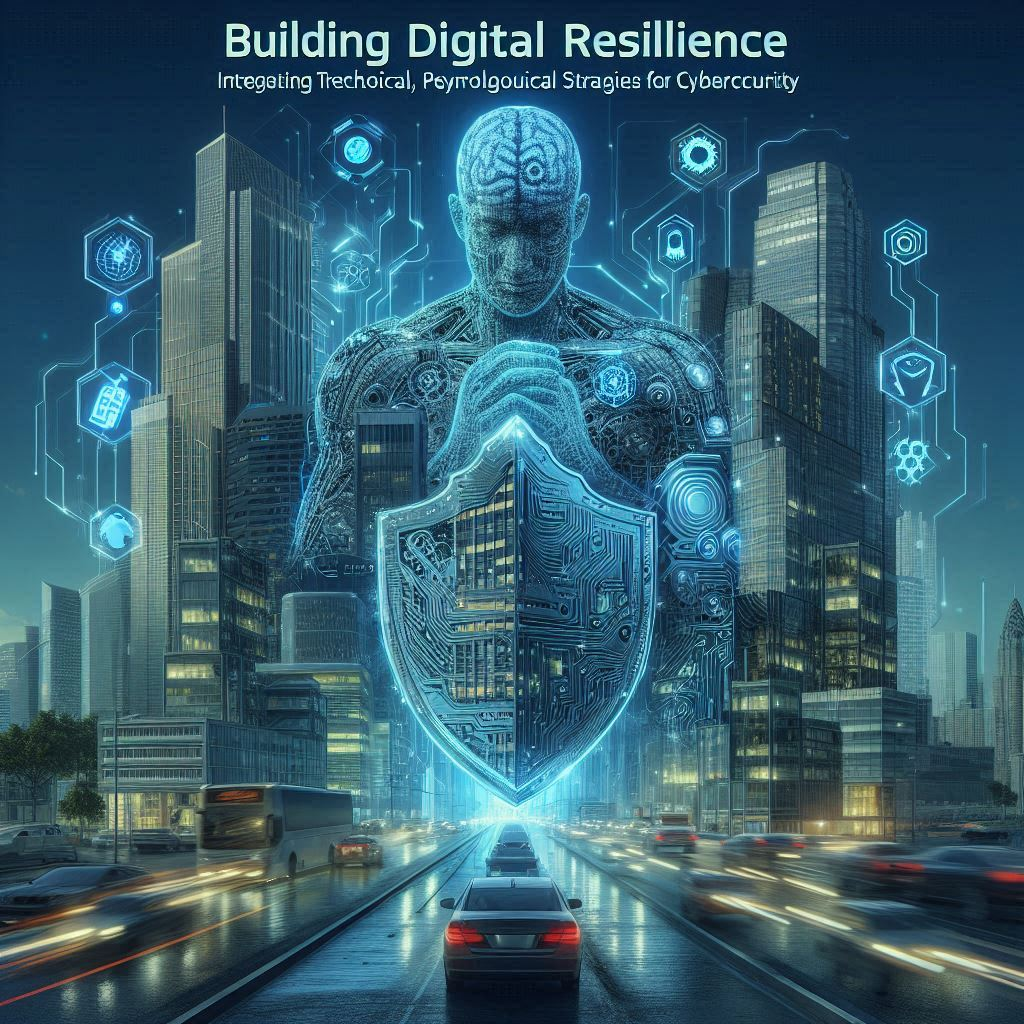Building Digital Resilience: Integrating Technical, Psychological, and Neurological Strategies for Cybersecurity

Introduction:
In the modern digital age, individuals and organizations face unprecedented risks from cyber assaults. Building digital resilience requires a multifaceted approach that combines technical security measures with psychological and neurological strategies. By integrating these diverse elements, we can create a robust defense against cyber threats, ensuring both digital security and mental well-being.
1. Protecting Against Cyber Threats: Technical Measures
Email Encryption:
Utilize methods like PGP/GnuPG and S/MIME to ensure only the intended recipient can read the content of your emails. You can also encrypt your emails if your are using any other email client e.g Google, Outlook. Check out our tutorial guide on How to Encrypt Your Emails for Maximum Security.
Use Anti-Malware Tools:
Malware attacks are very common form of cyber-attacks. You can easily protect your system from malware attacks just Check out our tutorial guide Protecting Your Systems from Malware Attacks.
Ø Regularly update and use tools such as Malware bytes. Anti-Virus to detect and remove malicious software. Here is our complete guide on how to use anti-malware tools Using Anti-Malware Tools: A Comprehensive Guide
Affiliate Links:
- Malwarebytes Homepage: Explore Malwarebytes
Protect your devices with Malwarebytes' advanced cybersecurity solut
Ø Ransomware is a type of malware attack in which cyber criminals attack your computer and encrypt your files and data then ask for a ransom amount. You can follow some easy steps and save your data and money, follow our tutorial guide on what Steps To Take If you are victim of a ransomware attack
Use Antivirus Software:
Install reputable antivirus software with real-time protection and automatic updates. Regular scans and proper settings can prevent malware infections and keep your system secure. To get most out of your antivirus software check out our tutorial Using Antivirus Software Effectively: A Comprehensive Guide
Affiliate Links:
- Surfshark Antivirus: Protect with Surfshark Antivirus
Safeguard your devices from malware and cyber threats.
2. Psychological Strategies for Dealing with Cyber Attacks
Very first don’t panic incase you are fallen for a cyber attack. The cyber attackers only use your fear as their weapon. So try being normal as much as you can. Cyber criminals always threaten people that they will leak or delete their sensitive data and ask them for ransom amount or access to even more important data. But it is proved that in 80% cases the victim cannot get their data back even after paying ransom amount.
So the best is to always stay protected even before falling into a scam. But if you are fallen into a scam then follow the best practices to reduce the damage check out our tutorial Steps To Take If you are victim of a ransomware attack
Understanding the psychological impact of cyber threats can help you manage stress more effectively. Techniques like mindfulness and cognitive-behavioral strategies can reduce anxiety and improve mental resilience. Regularly practicing stress-reducing activities such as mindfulness, exercise, and proper sleep can enhance your ability to cope with cyber threats. A calm and methodical approach during an attack can prevent panic and lead to better decision-making.
3. Neurological Insights into Cybersecurity
Ø Neuroplasticity:
Leverage the brain's ability to reorganize itself by forming new neural connections, enhancing response mechanisms to cyber threats through training programs and simulated scenarios.
Ø Fight or Flight Response:
Manage stress and panic during attacks by using techniques like deep breathing and mindfulness to regulate this response.
Ø Maintaining Focus and Vigilance:
Enhance cognitive functions such as attention, decision-making, and problem-solving through training exercises like meditation and cognitive drills.
Ø Memory and Recall:
Strengthen memory through neurological training techniques like spaced repetition and mnemonic devices to ensure consistent adherence to cybersecurity best practices.
4. A Holistic Approach to Cybersecurity
Combining Strategies Proves More Effective:
Combining technical, psychological, and neurological strategies provides a comprehensive approach to cybersecurity. By merging these diverse elements, you create a robust defense mechanism that not only protects your digital assets but also enhances your mental resilience. This holistic approach ensures you are well-prepared to handle cyber threats effectively.
Integrated approaches yield better results regarding security and mental health. Case studies have shown that organizations using integrated approaches to cybersecurity experience fewer breaches and recover more quickly from attacks.
Review:
- Malwarebytes: Ultimate Guide and Affiliate Review
- Surfshark: What is Surfshark Beyond VPN? Exploring the Full Arsenal for Ultimate Online Protection
Key Takeaways:
Building digital resilience requires a comprehensive approach that integrates technical, psychological, and neurological strategies. By implementing robust security measures, managing stress, and harnessing neurological insights, you can create a secure digital environment that supports both your digital and mental well-being.
Stay Tuned
The best articles, links, and news delivered once a week to your inbox.
